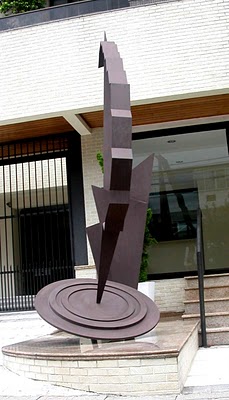
Belatengeta-Poet Laureate-Tsegaye Gebre-Medhin, Ethiopia’s premier versatile and prolific man of letters. For half a century now he has been continuously productive as poet, playwright, essayist, social critic, philologist, historiographer, dramatist, synthesis, peace-activist, artistic a director... on matters national, continental and global.
... Born in the highland village of Boda, near Ambo , west of the Ethiopian capital, Addis Ababa 17 August 1936 died in Manhattan on 26 February 2006.
Prologue to African Conscience
Tamed to bend
Into the model chairs
Carpentered for it
By the friendly pharos of its time
The black conscience flutters
Yet is taken in.
it looks right
It looks left
It forgets to look into its own self:
The broken yoke threatens to return
Only, this time
In the luring shape
Of luxury and golden chains
That frees the body
And enslaves the mind.
Into its head
The old dragon sun
Now breathes hot civilization
And the wise brains
Of the strong sons of the tribes
Pant
With an even more strange suffocation.
Its new self awareness
(In spite of its tribal ills)
Wishes to patchits torn spirits together:
Its past and present masters
(With their army of ghosts
That remained to haunt the earth)
Hook its innermost soul
And tear it apart:
And the african conscience
Still moans molested
Still remains drifting uprooted.
A lover love-rejected
With a spirit dejected,
A monk God-forsaken
hose total Faith is shaken,
Are less lost than dreamer
Into whose peace a “ question “
Plunged like a knife
And woke him to life,
To search, to find his way
To dodge, to fight his way
NOT dream it away !
On the grave of my friend, I stood.
For blood and flesh, I stayed . . .
And with faith I prayed, and prayed;
For blood and flesh, he was robed
. . .And with doubt, I hoped, and I hoped.
On the grave of my friend, as I stayed;
… On my future, I brood .
I stood on the grave of a man.
A tomb-stone of a man, I burdened.
The grave of a man, I murdered:
And with hope, my future, I sketched,
When with prayer, my killer hand, I stretched.
On the tomb-stone, of the man, I murdered:
. . Urrahh!!! I won!
On my victim’s carcass, I climb.
While on his tomb, I tread …
My bloody fingers, I spread:
Thus to repent, to justify, I have tried …
While I hoped, and prayed, I have cried.
And I won, my daily wine, and bread!
… Is it a crime?
I did not know, oh sir, that I stood on your way,
It all happened in chance; argument is unfit,
If we fight, others will benefit,
And as this road is also where my future lay,
Destiny forces me to answer you with “ Nay “
Pray lose no temper: lest you commit
A risk to result in a regrettable wit,
For, if there be crime, guilty is just the day:
I am also in yours as you are in my shoes
So do let us shift sir, to either side
However painful it becomes, we should, though
We realize that it isn’t much to lose
That in spite of us the way is wide
And that after all, someday, both of us go.
Showers of anguish
Rain, do not exhaust
Ocean of revenge
Of the innermost
Voice of the betrayed
Comfort of the lost,
Tears torn of self
Blood of the heart.<















